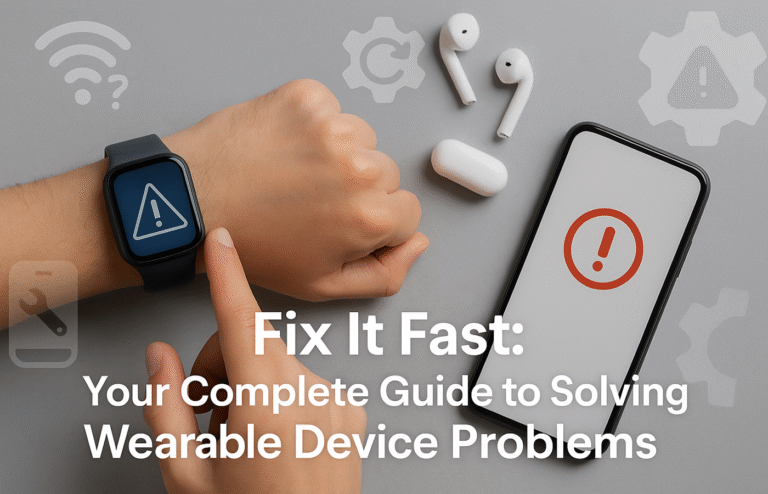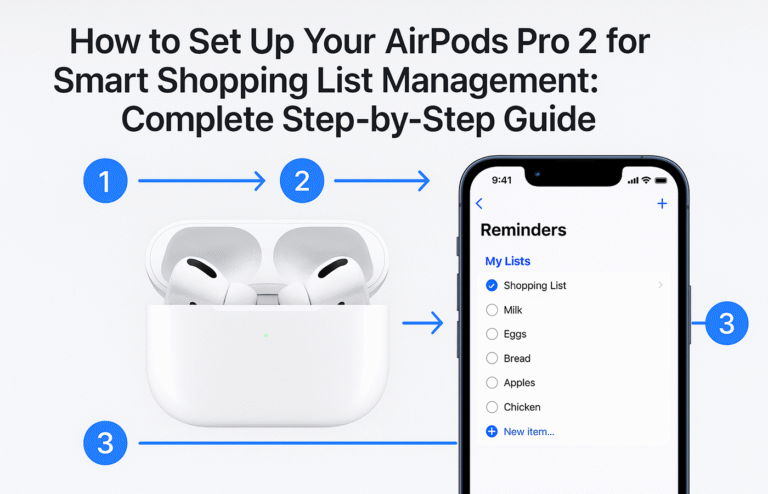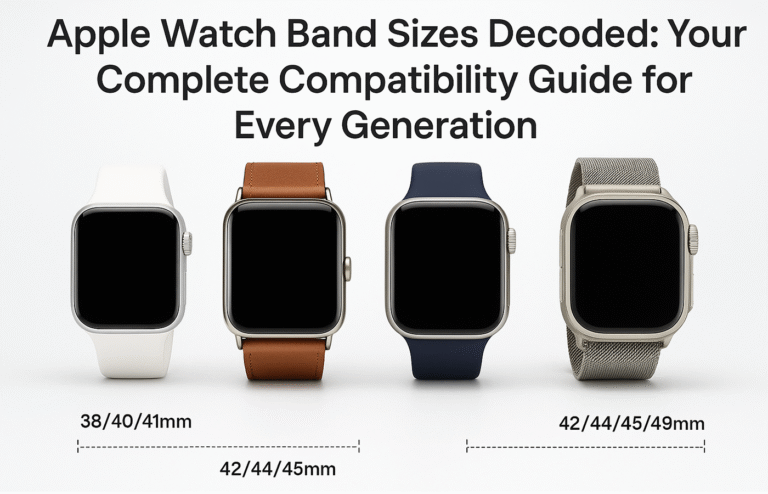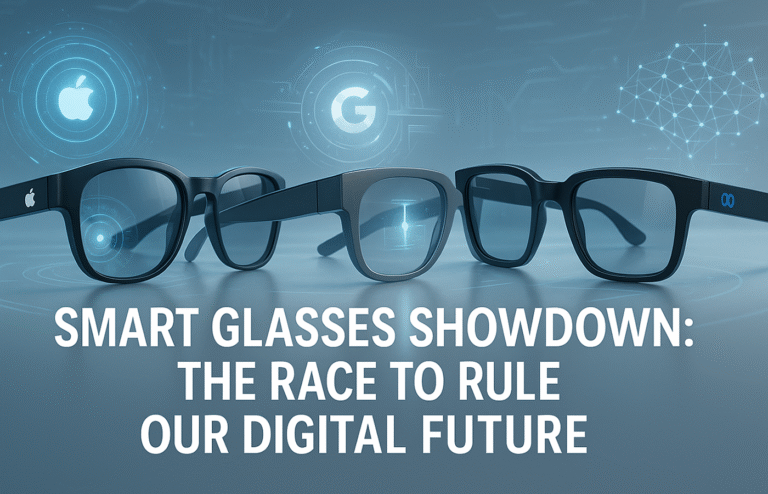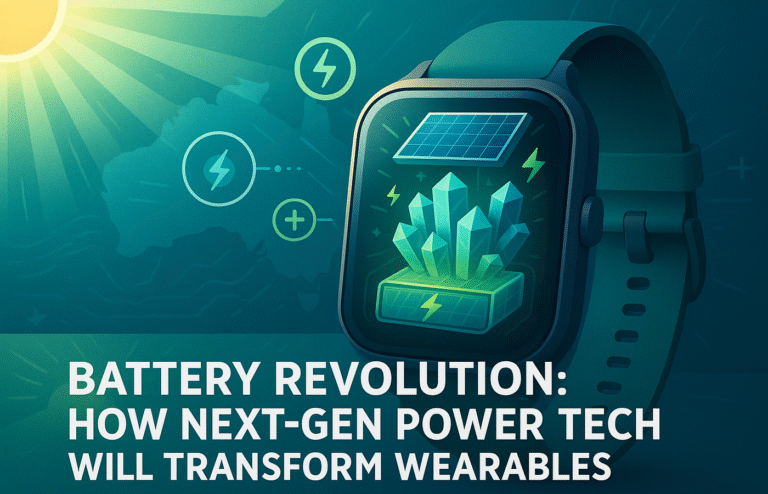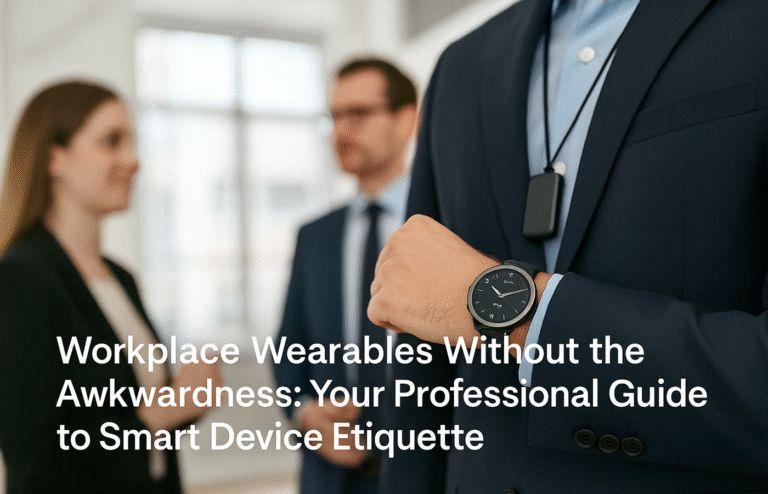Wearable AI Charging Cables: Complete Australian Beginner’s Guide
Wearable devices use specialised charging methods due to size constraints, water resistance requirements, and comfort considerations, creating variety in charging solutions.
Charging Types:
● Magnetic charging: Most popular choice (Apple Watch $45 AUD, Samsung Galaxy Watch $35-50 AUD)
● USB-C: Universal compatibility with faster speeds, increasingly common in smart rings and fitness trackers
● Proprietary pin connectors: Brand-specific solutions like Garmin’s clip-on system ($25-40 AUD)
● Wireless charging: Qi standard compatibility for ultimate convenience ($30-150 AUD pads)
Key Considerations:
● Magnetic systems offer reliability but require brand-specific cables
● USB-C provides universality and faster charging with $15-25 AUD cable availability
● Wireless charging sacrifices speed for convenience during overnight charging
Recommendations: Consider lifestyle, travel habits, and universal compatibility needs when choosing wearable devices and backup charging solutions.
Power Up Your Wearables: The Ultimate Charging Cable Guide for Beginners
Confused by all the different charging cables for smartwatches, fitness trackers, and other wearable AI devices? You’re not alone! This beginner’s guide breaks down the most common charging methods used by popular wearable AI devices in plain English. Learn the difference between magnetic charging, USB-C, and proprietary connectors, discover which brands use which types, and get practical tips for keeping your devices powered up. Whether you’re shopping for your first smartwatch or trying to understand why your friend’s fitness tracker uses a completely different charger than yours, this guide will help you navigate the sometimes confusing world of wearable device charging. No technical jargon – just clear, helpful information to make your wearable AI experience smoother and more enjoyable.
Why Do Wearable Devices Need Special Chargers?
Before diving into the different types of charging cables, it’s worth understanding why wearable devices can’t simply use the same charging port as your smartphone. Unlike phones, wearables face unique challenges that influence their charging design.
Firstly, size constraints mean there’s limited space for traditional charging ports. Additionally, wearable devices need to maintain water resistance, which rules out exposed charging ports. Finally, these devices must remain comfortable to wear, so bulky charging solutions simply won’t work.
Consequently, manufacturers have developed creative charging solutions that balance practicality, durability, and user convenience. However, this has led to a variety of charging methods that can confuse newcomers to the wearable world.
Magnetic Charging: The Most Popular Choice
Magnetic charging has become the gold standard for most wearable AI devices, and for good reason. This method uses magnets to create a secure connection between your device and its charger, eliminating the need for physical ports that could compromise water resistance.
How Magnetic Charging Works
The charging cable features a magnetic disc or puck that snaps onto the back of your wearable device. Metal contacts on both the charger and device create the electrical connection needed for power transfer. Furthermore, the magnetic attraction ensures proper alignment, making it nearly impossible to connect incorrectly.
Apple Watch: The Pioneer
Apple Watch set the standard for magnetic charging in wearables. The distinctive white charging puck (RRP around $45 AUD for official replacements) uses a series of magnets to attach securely to the watch’s back. Moreover, the circular design accommodates all Apple Watch sizes and models, though charging speeds have improved with newer versions.
The Apple Watch’s charging method is so reliable that many users charge their device nightly without ever experiencing connection issues. Additionally, the magnetic connection is strong enough to hold the watch in place, even if you accidentally bump the charging cable.
Samsung Galaxy Watch Series
Samsung’s approach to magnetic charging varies slightly across their wearable lineup. The Galaxy Watch series uses a wireless charging cradle that magnetically aligns with the watch. Similarly, the newer Galaxy Watch Ultra features improved charging speeds while maintaining the same magnetic connection principle.
Replacement Samsung charging cradles typically retail for around $35-50 AUD, depending on the specific model. Importantly, newer Samsung watches often include faster charging capabilities, reducing the time needed for a full charge.
Why Magnetic Charging Dominates
Several factors explain magnetic charging’s popularity among wearable manufacturers. Primarily, it maintains device integrity by eliminating physical ports that could leak or break. Additionally, the user experience is consistently positive – simply place your device near the charger, and the magnets do the rest.
However, magnetic chargers do have limitations. They’re typically proprietary to each brand, meaning you can’t share chargers between different manufacturers. Furthermore, the magnetic connection can occasionally be disrupted if the cable is moved during charging.
USB-C: The Universal Solution
USB-C charging represents the future of wearable device charging, offering universal compatibility and faster charging speeds. This standard connector is already familiar to most users from smartphones, tablets, and laptops.
The Benefits of USB-C
The primary advantage of USB-C in wearables is universality. Unlike proprietary magnetic chargers, USB-C cables can often be shared between devices from different manufacturers. Additionally, USB-C typically enables faster charging speeds compared to older charging methods.
Another significant benefit is availability. USB-C cables are widely available in Australia, with quality options starting from around $15-25 AUD. Consequently, finding a replacement cable or backup charger is much easier than sourcing proprietary alternatives.
Smart Rings Leading the Way
Many smart rings, including the popular Oura Ring, have adopted USB-C charging. The charging case for the Oura Ring (which retails for around $450-650 AUD in Australia) uses USB-C, allowing users to charge both the ring and case with commonly available cables.
Similarly, Samsung’s Galaxy Ring uses a compact USB-C charging case, demonstrating how even the smallest wearables can benefit from universal charging standards.
Fitness Trackers Embracing USB-C
Newer fitness trackers increasingly feature USB-C charging ports. These devices often include a small charging cable that connects directly to the tracker, eliminating the need for separate charging cradles or magnetic connections.
However, it’s worth noting that USB-C ports on wearables require careful design to maintain water resistance. Therefore, manufacturers often include protective covers or seals that users must manage during charging.
Proprietary Pin Connectors: Brand-Specific Solutions
Some manufacturers continue using proprietary pin connector systems, particularly for devices that prioritise battery life and ruggedness over universal compatibility.
Garmin’s Clip-On Approach
Garmin has developed a distinctive charging system featuring spring-loaded pins that clip onto the back of their devices. This approach works exceptionally well for their target audience of serious athletes and outdoor enthusiasts who need reliable charging in challenging conditions.
Garmin charging cables typically cost around $25-40 AUD for official replacements. Moreover, the clip-on design creates a secure connection that’s difficult to accidentally disconnect during charging.
The pin connector system allows Garmin to maintain excellent water resistance while providing reliable charging. Additionally, the mechanical connection often proves more durable than magnetic alternatives in rugged environments.
Fitbit’s Unique Solutions
Fitbit has historically used various proprietary charging solutions across their device lineup. Earlier models featured clip-on chargers similar to Garmin, while newer devices have moved towards more streamlined magnetic systems.
Replacement Fitbit chargers generally cost between $20-35 AUD, depending on the specific model. Importantly, Fitbit chargers are rarely interchangeable between different device generations, making it essential to keep track of your specific charger type.
Why Brands Choose Proprietary Systems
Several factors drive manufacturers to develop custom charging solutions. Primarily, proprietary systems allow complete control over the charging experience, enabling optimisation for specific device requirements. Additionally, custom solutions can provide better waterproofing and durability for specialised use cases.
However, proprietary charging systems create customer dependency and can be frustrating when cables are lost or damaged. Furthermore, the lack of universal compatibility means users must carry multiple chargers for different devices.
Wireless Charging Pads: The Convenient Option
Wireless charging offers the ultimate convenience for wearable devices, eliminating cables entirely. This technology uses electromagnetic fields to transfer power from a charging pad to your device.
Qi Standard Compatibility
Many newer wearable devices support the Qi wireless charging standard, allowing them to charge on any compatible wireless charging pad. This universality means you can often charge your wearable on the same pad used for your smartphone.
Quality Qi wireless charging pads are available in Australia starting from around $30-50 AUD for basic models, with premium options featuring multiple device charging costing $80-150 AUD.
Convenience vs. Speed Trade-offs
While wireless charging offers unmatched convenience, it typically charges more slowly than direct cable connections. Additionally, precise positioning is often required for optimal charging efficiency, which can be challenging with smaller wearable devices.
Nevertheless, wireless charging works excellently for overnight charging scenarios where speed isn’t critical. Furthermore, the ability to simply place your device on a pad without fumbling with cables appeals to many users.
Practical Charging Tips for Wearable Users
Successfully managing multiple wearable devices requires some planning and organisation. These practical tips will help streamline your charging routine and prevent common problems.
Cable Management Strategies
Organising multiple charging cables doesn’t have to be complicated. Consider using a dedicated charging station that accommodates different cable types. Alternatively, cable organisers or small storage boxes can keep everything tidy and easily accessible.
Labelling cables can prevent confusion, especially when multiple household members use similar devices. Moreover, keeping cables in consistent locations reduces the likelihood of misplacing them when you need them most.
Travel Charging Solutions
Travelling with wearable devices requires careful planning to ensure you don’t forget essential chargers. Creating a travel charging kit with all necessary cables, adapters, and portable power banks can prevent frustrating situations.
Consider investing in a multi-device travel charger that accommodates different wearable charging methods. Additionally, portable power banks with wireless charging capabilities can provide backup power for multiple devices simultaneously.
Backup Charger Recommendations
Having backup chargers for essential wearable devices provides peace of mind and prevents disruption to your routine. For frequently used devices like smartwatches, consider purchasing an official backup charger for home and another for work or travel.
Third-party charging solutions can offer cost savings, but ensure they’re compatible with your specific device and meet safety standards. Moreover, reading reviews from other Australian users can provide valuable insights into reliability and performance.
When Cables Break or Get Lost
Eventually, charging cables will break or disappear, so knowing your replacement options is crucial. Start by checking the manufacturer’s official website or authorised retailers for genuine replacement cables.
If official replacements are expensive or unavailable, reputable third-party alternatives may provide adequate solutions. However, always verify compatibility and read reviews before purchasing non-official charging accessories.
Making the Right Choice for Your Needs
Understanding the different charging methods helps you make informed decisions when purchasing wearable AI devices. Consider your lifestyle, travel habits, and device usage patterns when evaluating charging options.
If you prefer simplicity and don’t mind carrying device-specific chargers, magnetic charging systems offer reliability and ease of use. Conversely, if you value universal compatibility and faster charging, devices with USB-C support might better suit your needs.
For users who prioritise convenience above all else, wireless charging capability can significantly enhance the daily experience, despite potentially slower charging speeds.
Remember that charging method is just one factor to consider when choosing wearable devices. Nevertheless, understanding these differences ensures you won’t be surprised by charging requirements after making a purchase.
The wearable AI market continues evolving rapidly, with charging technologies improving alongside device capabilities. By understanding current charging methods and their trade-offs, you’ll be better prepared to navigate this exciting and growing technology category.



